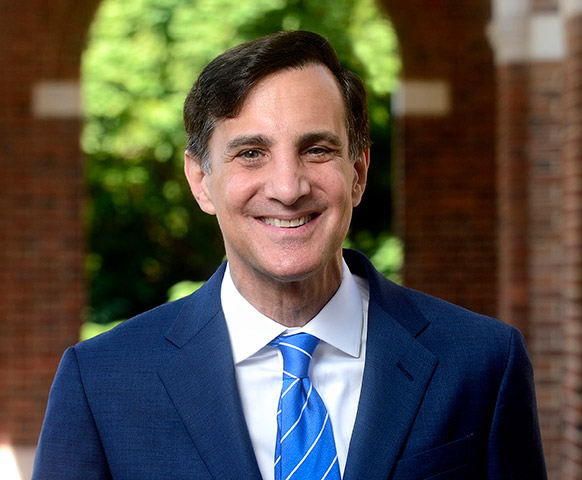
Image caption:
Ronald J. Daniels
President
There are ghosts in my office.
They do not emanate from the monumental desk that, according to tradition, belonged to Johns Hopkins himself.
Rather, they emerge in other, less obvious places. They are there in conversations about how we navigate our dependence on federal research funding. They are there in our discussions of how we, one of the most decentralized universities, have become known for entrepreneurial, cross-disciplinary programs like Biomedical Engineering. They inform our relationships with our neighbors in East Baltimore and the communities surrounding Homewood.
On countless occasions, on topics large and small, so many of our conversations are rooted in the university's past.
To borrow the words of famed historian and Johns Hopkins PhD Frederick Jackson Turner, history "is ever becoming—never completed." As the beneficiary of so many achievements planned for and executed, so many challenges confronted and overcome, I find myself asking: How did we get here?
We can begin to glean the answer from any number of sources, from the early histories of the university to chronicles of our individual schools. But it is striking that we do not have a history of the university that knits together the experiences of our many divisions and illuminates how we, as an institution, were shaped by the dramatic changes of the last 138 years.
The absence of this analysis is a lacuna, one we are working to fill through a new project exploring the history of Johns Hopkins. The centerpiece will be a book, but the effort will also involve new ways to integrate our history into university life. In the coming months, we'll launch a series of student-curated digital exhibits delving into the Johns Hopkins student experience, and we'll work to build our collection of oral and video histories from members of our community. These efforts will come together on a new website, which will be a virtual home for the project, and a place where you can share stories and pictures of your time at Johns Hopkins. I hope you'll take a minute to visit the site at jhu.md/jhuhistory.
This history is personal. I live with it, work with it, and am shaped by it every day. Like so many of you, I am proud to be a part of it.
But this effort is not for us alone. We created the American research university model. A history of Johns Hopkins that maps how our university was framed from its beginning and has evolved over time will resonate with institutions of higher learning throughout the country and around the globe.
So I look forward not to exorcising the ghosts that gather around my desk but rather to seeing them more clearly as we look to our future.

Ronald J. Daniels
President







